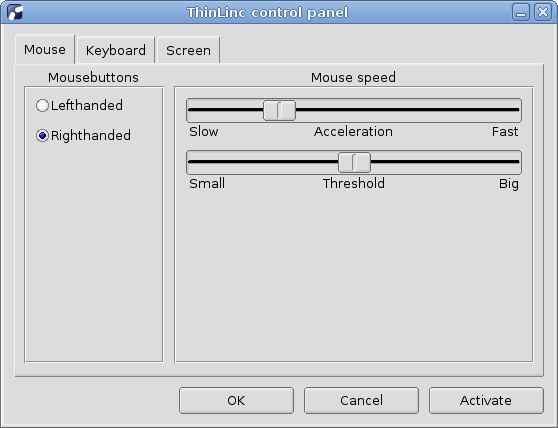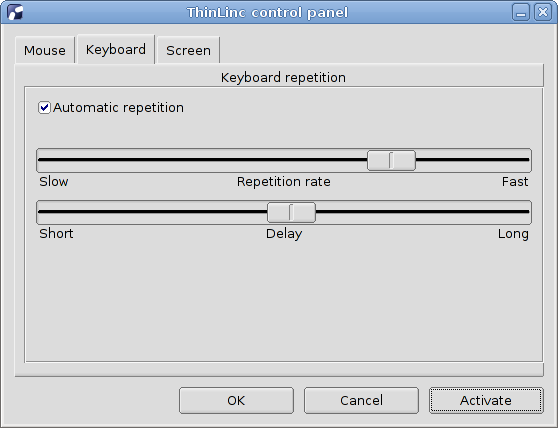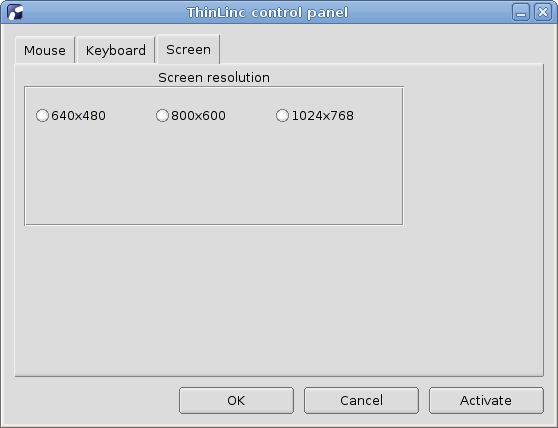When installing dedicated clients, for example old PCs or thin terminal boxes, it's common to install the client to run in XDM mode. XDM is an acronym for X Display Manager and is the name of a small graphical program used for graphical logins in many UNIX systems. By using the ThinLinc client in XDM mode you can make sure that the client appears automatically when the client hardware is started and that it reappears directly after a user logs out.
To run the client in XDM mode you need to start it with the -x option. When running in XDM mode the following changes will be made to the client interface.
The Exit button is removed.
Control panel is enabled. This makes it possible to control the dedicated client, for example keyboard and mouse.
Mouse acceleration and keyboard repetition settings are loaded from the client configuration file and applied at startup.
Always use fullscreen
More limited F8 menu
When running in XDM mode a Control Panel button will be shown in the ThinLinc login window. When this button is clicked the client will show a control panel where the user can control the keyboard, mouse and screen. The reason for this control panel is that the user otherwise has few possibilities to change those settings, since the client runs without any graphical window manager with settings for these options.
The control panel consists of a window with three pages ordered by tabs. One page is used for mouse settings, one for keyboard and one for screen.
This page contains mouse settings. The user can here control whether the mouse buttons should be setup for left or right hand use. When changed the left and right mouse button change place. The mouse speed has two controls, the mouse acceleration and the acceleration threshold. The acceleration setting controls how much the mouse movements will accelerate when the mouse is moved faster. The threshold controls how fast the mouse needs to be moved before the movement will be accelerated. Acceleration is the phenomena where the mouse pointer is moved more if the mouse is moved fast than if it's moved the same distance slowly.
The keyboard tab contains settings for keyboard repetition. The check box Automatic repetition controls whether a key that is held down should be repeated automatically or not. The other two controls sets the repetition rate and the repetition delay. The repetition rate is the speed of the repetition, how many chars from a held down key that will be written each time interval. The repetition delay controls how long the key needs to be held down before it becomes repeated. A too short delay can be bad since it then becomes possible to write double characters by mistake.


